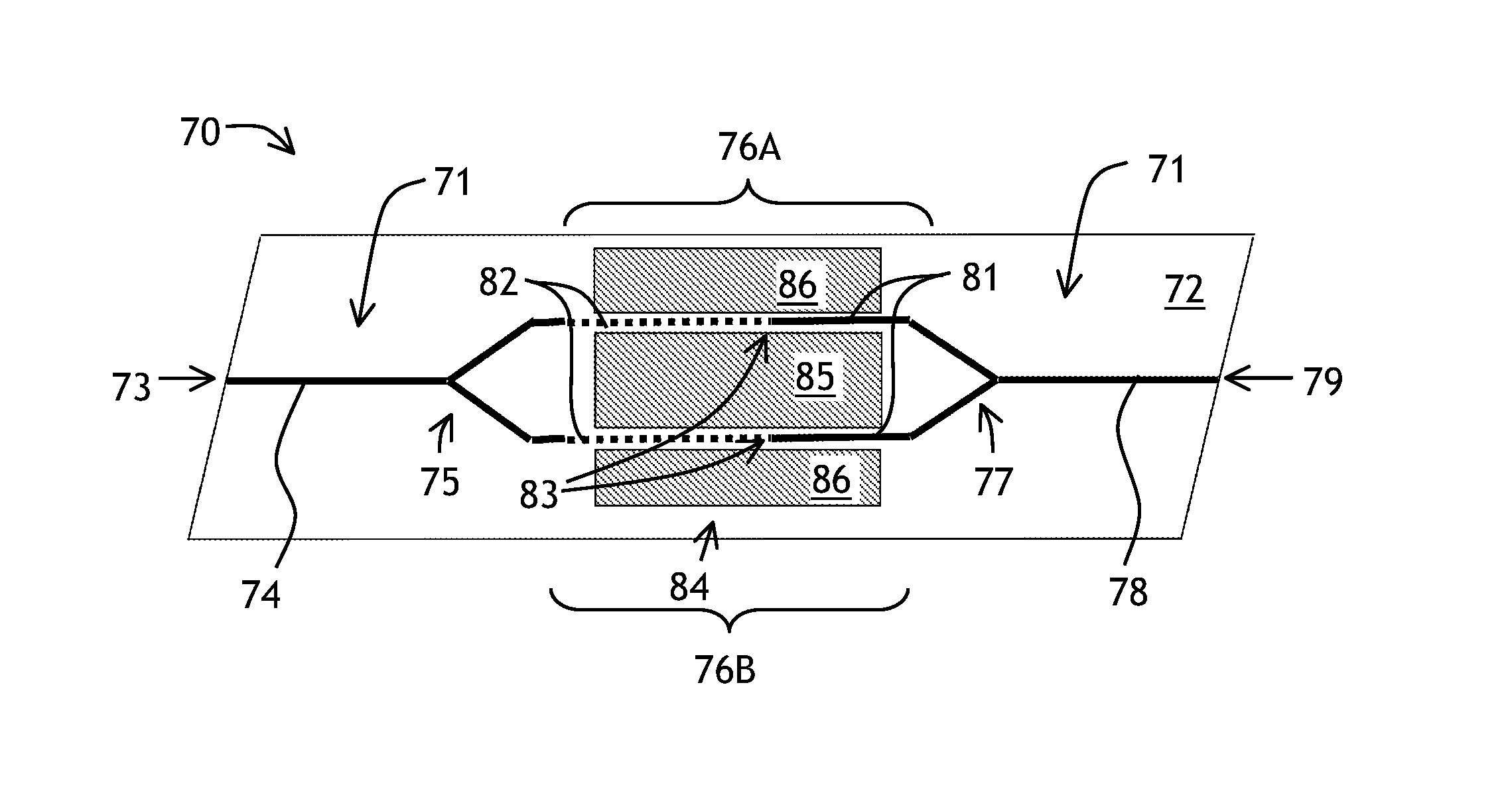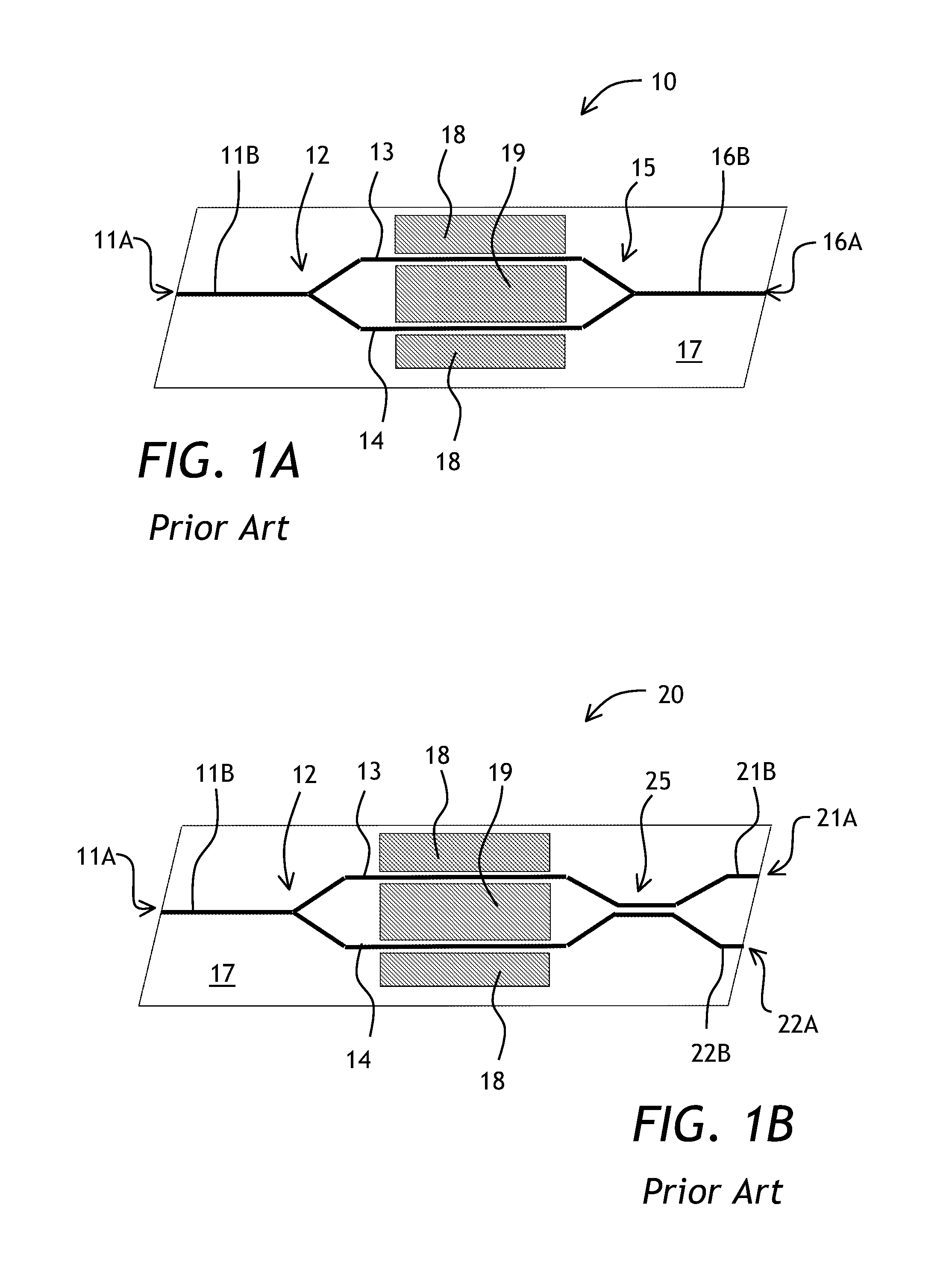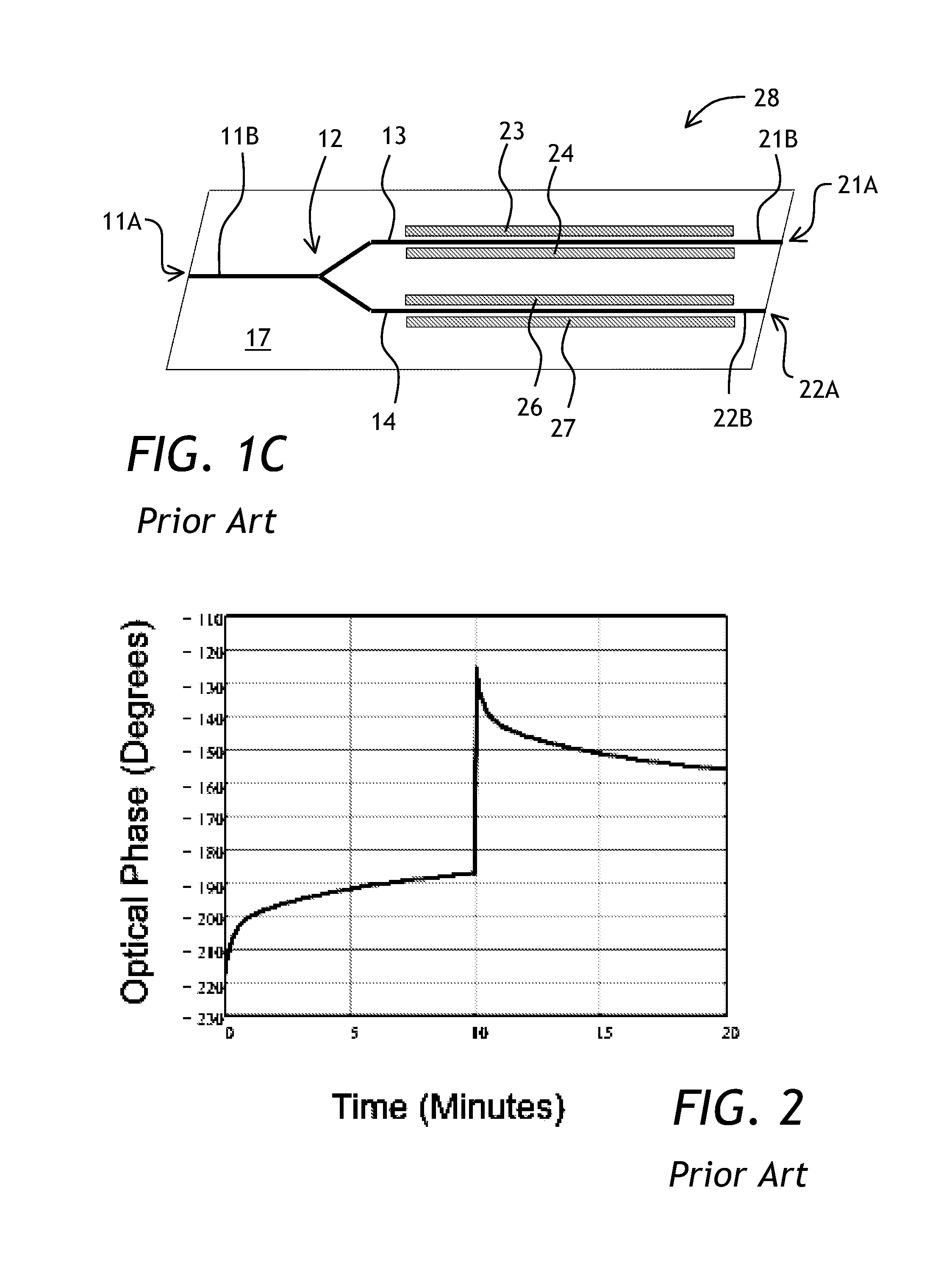Optical phase modulator
a phase modulator and optical phase technology, applied in the field of optical phase modulators and tunable interferometers, can solve the problems of limiting the application area of optical modulators, affecting the performance of optical waveguide light guides, and affecting the performance of optical waveguides, so as to reduce thermal drift of the overall electro-optical coefficient and reduce the optical phase drift
- Summary
- Abstract
- Description
- Claims
- Application Information
AI Technical Summary
Benefits of technology
Problems solved by technology
Method used
Image
Examples
Embodiment Construction
[0038]While the present teachings are described in conjunction with various embodiments and examples, it is not intended that the present teachings be limited to such embodiments. On the contrary, the present teachings encompass various alternatives, modifications and equivalents, as will be appreciated by those of skill in the art.
[0039]To better explain the invention and highlight advantages offered thereby, time drifts of electro-optical responses of prior-art APE- and Ti-diffusion waveguide optical phase modulators will be considered in more detail first.
[0040]The time drift of an electro-optical response of a prior-art APE waveguide optical phase modulator has been characterized by applying multiple voltage steps of different durations to the modulator's electrodes; measuring the resulting optical phase increments as a function of time; taking a Fourier transform of the optical phase measurements to obtain the optical phase as a function of frequency; and taking an inverse valu...
PUM
| Property | Measurement | Unit |
|---|---|---|
| temperatures | aaaaa | aaaaa |
| temperatures | aaaaa | aaaaa |
| temperatures | aaaaa | aaaaa |
Abstract
Description
Claims
Application Information
 Login to View More
Login to View More - R&D
- Intellectual Property
- Life Sciences
- Materials
- Tech Scout
- Unparalleled Data Quality
- Higher Quality Content
- 60% Fewer Hallucinations
Browse by: Latest US Patents, China's latest patents, Technical Efficacy Thesaurus, Application Domain, Technology Topic, Popular Technical Reports.
© 2025 PatSnap. All rights reserved.Legal|Privacy policy|Modern Slavery Act Transparency Statement|Sitemap|About US| Contact US: help@patsnap.com



